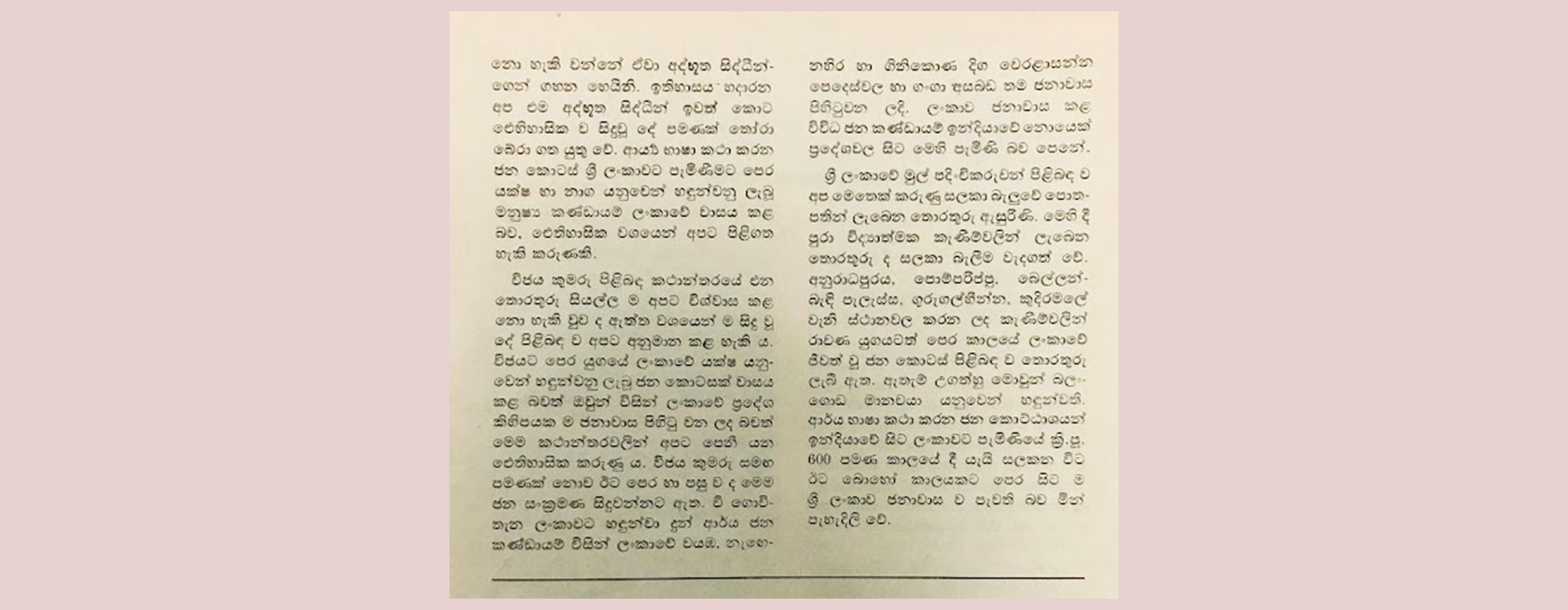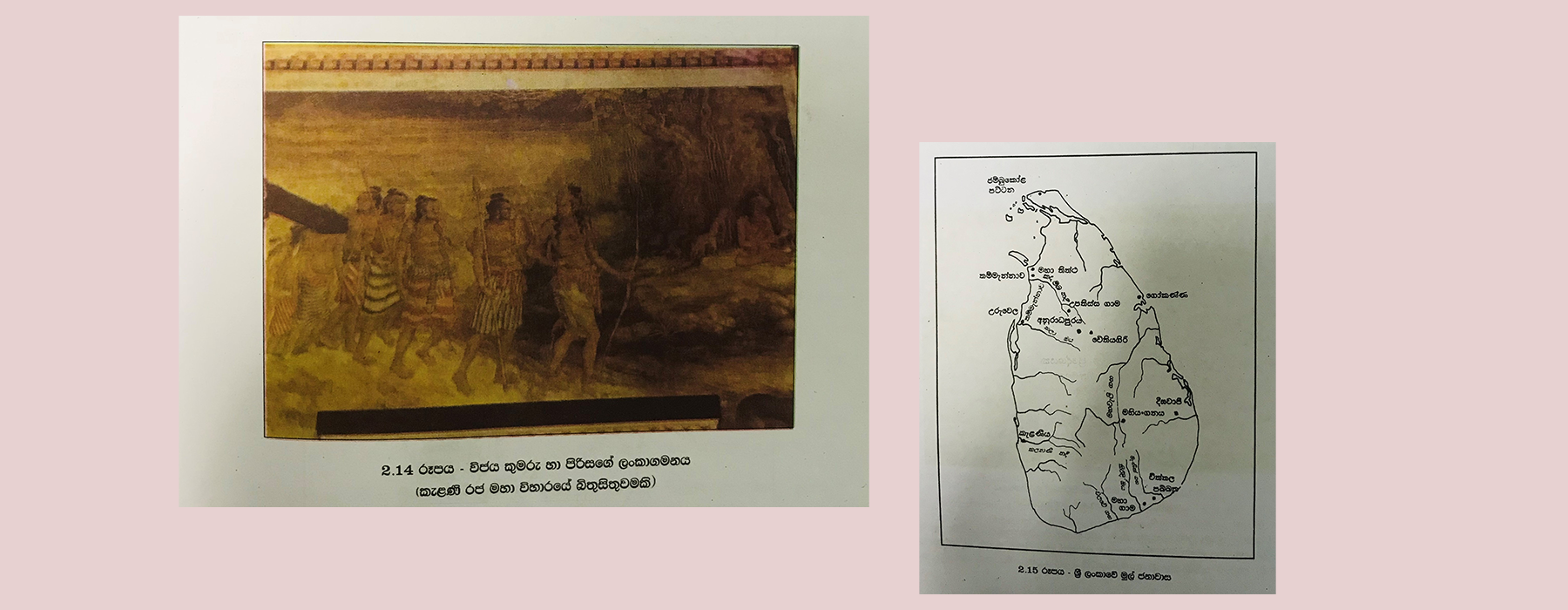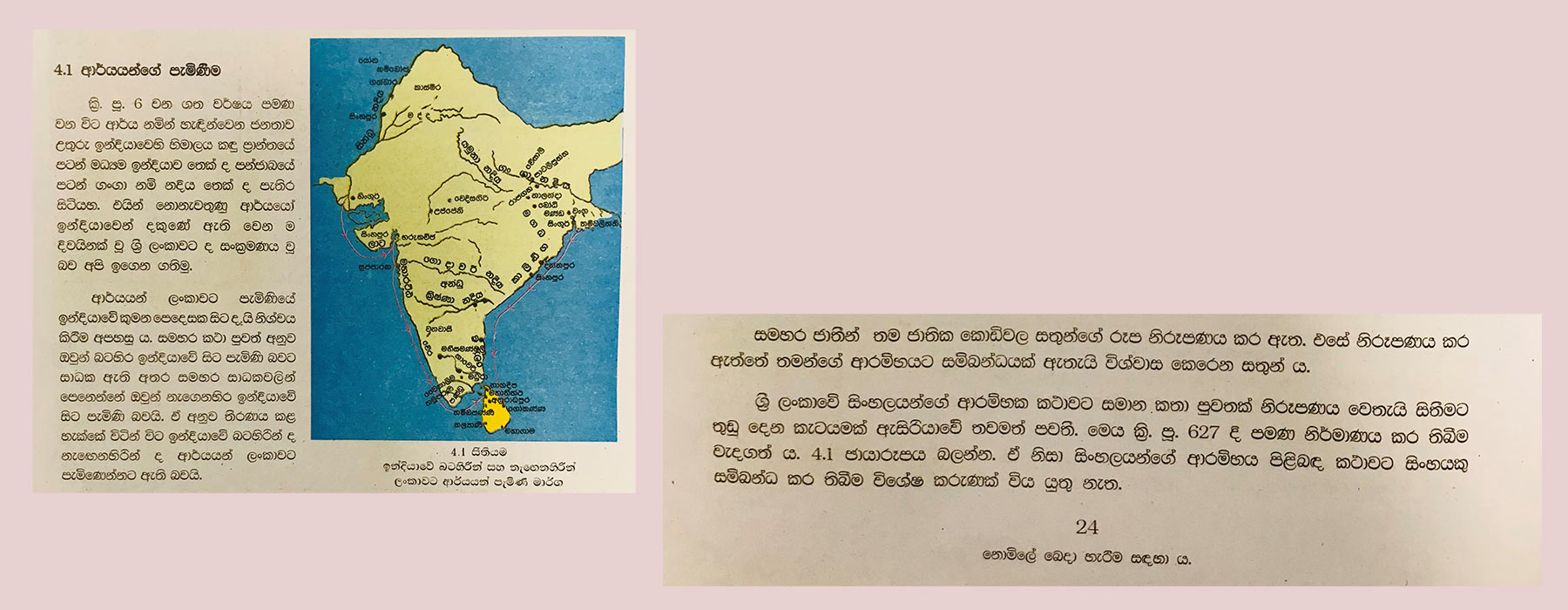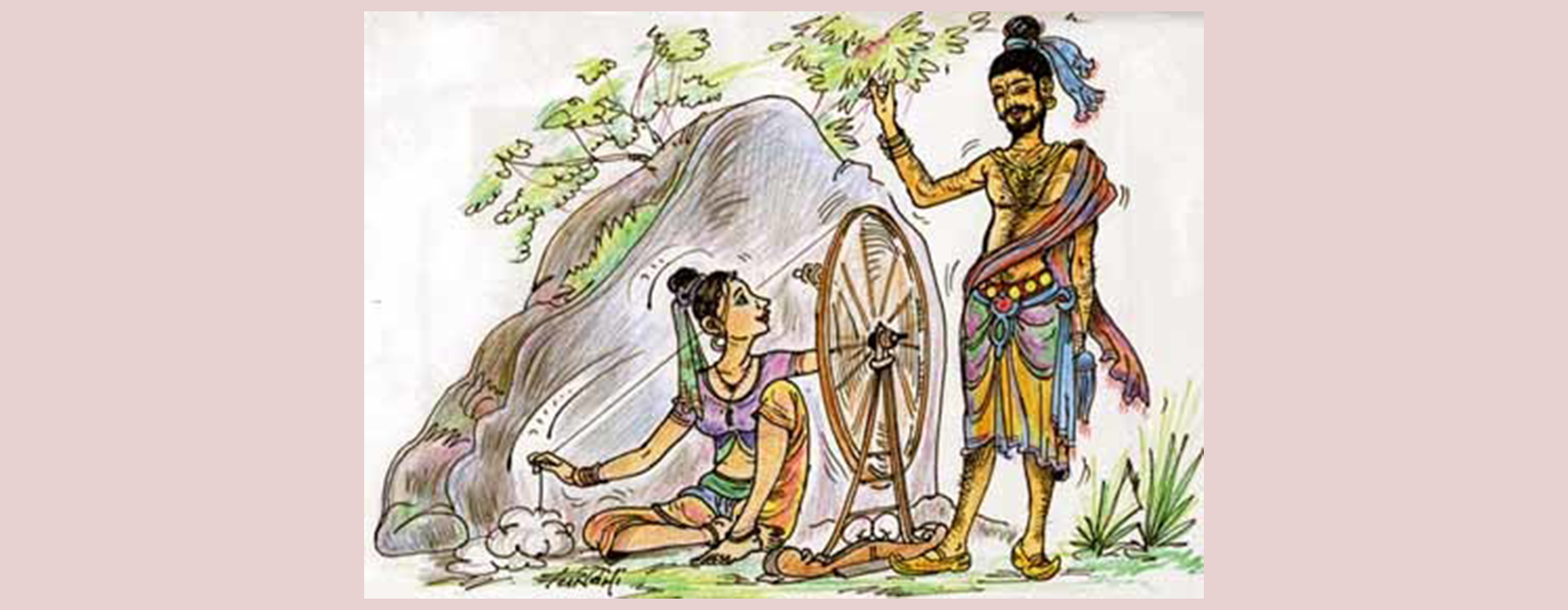- 1973
- 1994
- 1999
- 2005
- 2021
Social Studies Grade 07
The lesson begins with the arrival and spread of Aryans and Dravidians in Lanka. No other history syllabus (1994, 1999, 2005, 2021) draws a distinction between “Arya” and “Dravidian”. Moreover, the story related in this particular section is long. Accordingly, in addition to the arrival of Vijaya, the stories about the settlement of Sri Lanka in the "Walahassa Jataka" and "Hyung Tsang" are mentioned as well. Vijaya’s arrival is followed by stories relating to Panduwasdeva, Bhaddakacchana, and others, all of whom are associated with the settlement of Aryan civilization in the country. The textbook details the political and social structures of society then. The authors have attempted to pinpoint students to the links between India and Sri Lanka, regarding the formation of civilizations in the island.
Vijaya’s arrival is linked inextricably with the Buddha’s passing away. This episode is related only in the present textbook and the 1994 essay. The story of Vijaya's coming to power is detailed imaginatively, as is the way he defeated the Yakshas.
The section titled “The Arrival of the Dravidians” relates the invasion of the Dravidians, an episode not to be found in any other textbook. From "Sena Guttika", who is considered to be the first Dravidian invader in the island, to Arya Chakravarti in the 13th century, these stories have been carefully detailed.
History Grade 06
Compared to other textbooks, this section adopts a rather critical approach. The genealogies listed in the section are long. But at the very end, the student is invited to understand history from a more critical perspective. We do not find such an approach in any other textbook (1973, 1999, 2005, 2021). In addition, a note about the places, and prehistoric archeological evidence, in Sri Lanka associated with the Ramayana are found have been included. Unlike other textbooks, no diagrams or maps have been used.
The story of the Ramayana is narrated at great length and the Buddha's death is linked with the arrival of Vijaya. This link is mentioned only in the 1973 syllabus. Vijaya's origin or his background in India is covered as well. It has not been detailed so considerably in other books.
After Vijaya landed in Sri Lanka, how he met Kuveni, a woman from the Yaksha tribe, has been described in detail and some information about the Yaksha tribe has been laid down. According to the narrative outlined here, the Veddha community in Sri Lanka trace their origins to the two children born to Vijaya and Kuveni. This rather fascinating detail is not mentioned in other books.
Social Studies and History Grade 07
This essay begins on an unconventional note by presenting information about Sri Lanka’s prehistory. It mentions several places and ruins, such as Pahiangala, Bellanbandipalassa, Pomparippu, and so on, associated with that prehistory. For the first time, diagrams have been used to accompany the text. Tables, maps, etc. were used in the syllabus of 1973, but this textbook features the Kelani Vihare painting of Vijaya’s meeting with Kuveni, drawn by Solias Mendis. It motivates students to imagine how Vijaya’s arrival took place. Compared to other textbooks, the genealogy is very crisp.
In presenting the story so concisely, however, no mention is made about Jivahattha and Disala, considered to be Vijaya’s and Kuveniya's children. Vijaya’s act of procuring a princess from Pandya and the subsequent Indo-Lanka migration are mentioned. Some rather interesting facts about the settlements built around Malwatu Oya have also been included.
History Grade 07
This essay introduces the Arya people and how they arrived in India. Their origins are detailed at some great length, a distinguishing feature of this essay. The essay presents Vijaya’s story from a more nuanced, one could say multi-dimensional, standpoint, unlike in other textbooks. The story of a merchant called “Sinhala” has, to be sure, been mentioned in other books, but none of them relate that story to the formation of civilization in Ceylon and the origin myths of Europe.
How settlements were built in Ceylon, the origin myth of the lion, are all presented here from a comparative perspective, with references to sources from Rome, Assyria, and India. As with the 1999 syllabus, illustrations and maps have been used here.
This essay does not emphasize the Vijaya story that much. There is very little one gets to know about Vijaya, Kuveni, the Yaksha tribe, and Vijaya’s and Kuveni’s children. The textbook does describe the administration of the country following Vijaya’s reign.
History Grade 06
The abstraction or idea of “Arya-ness” is not given prominence in this essay. As such, terms like “Arya language” and “Arya people” have not been highlighted. Compared to other essays, descriptions are brief, with a short note spanning one and a half pages. An incident from Vijaya’s arrival in the island and his encounter with Kuveni has been represented visually in these pages. The illustration depicts the moment when Kuveni spun cotton at the exact time of Vijaya’s arrival. There are no other stories about the formation of settlements in Sri Lanka. Vijaya’s story is all too brief, though a description of settlements near the Malwatu Oya, following Vijaya’s capture of power in the island, is given.
Vijaya’s rise to power has been described to some extent. Points about the Yaksha tribe not mentioned in other textbooks have been detailed as well. For instance, the essay mentions the two cities that the tribe ruled over, Sirisavattuwa and Lankapura.
- 1973
- 1994
- 1999
- 2005
- 2021





